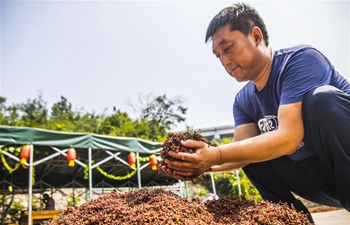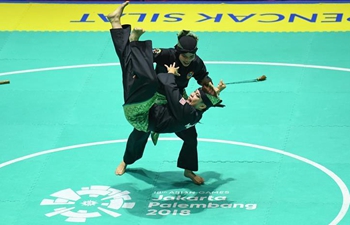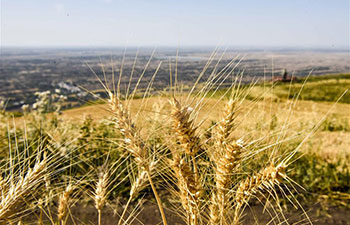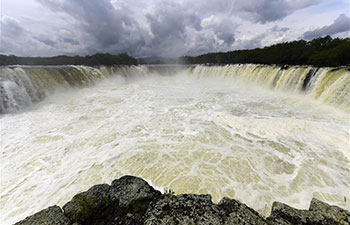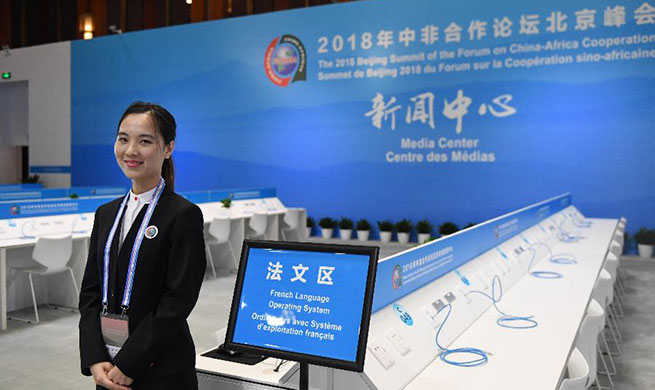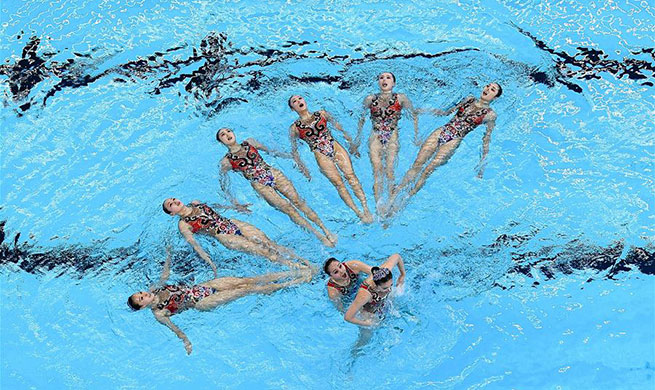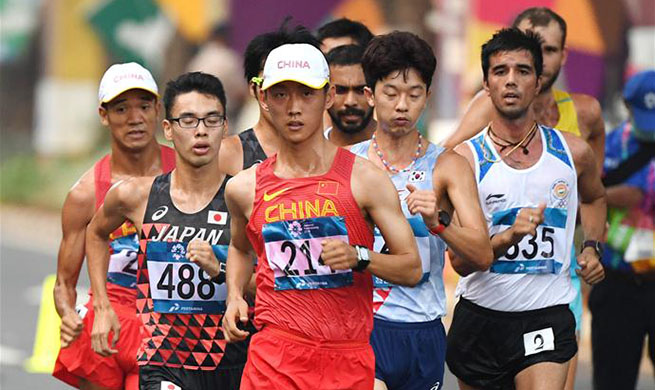CHANGSHA, Aug. 29 (Xinhua) -- As the new school semester approaches, more than 1.3 million copies of textbooks and teacher's guidebooks written by Chinese experts have arrived in South Sudan.
With South Sudan's national flag being printed on the upper left of the book covers and the China Aid label on the lower right, these teaching materials are part of the Technical Cooperation Project of Education in South Sudan. The project is organized by China's Ministry of Commerce and contracted to China South Publishing & Media Group Co., Ltd, a major book publisher in China.
The publisher put together a Chinese team which developed a curriculum framework as well as compiled and printed Grade 1 student textbooks and teacher's books for English, Science, and Mathematics with experts from South Sudan.
A delivery ceremony was held last week in Beijing in the days prior to the Beijing Summit of the Forum on China-Africa Cooperation, marking the completion of the project's first phase.
Michael Lopuke Lotyam, undersecretary of the Ministry of General Education and Instruction of South Sudan, hailed the project as "a successful pilot project which shows a very good example for cooperation on education between China and South Sudan" in the ministry's feedback letter.
"This project has met the needs of education and substantially improved the basic education environment of South Sudan," he said.
Before compiling the textbooks, the Chinese team visited schools and other educational institutions in South Sudan and found that, after five years of civil war, the seven-year-old country attached great importance to the development of education but their hands were tied by a lack of funding and talent.
The shortage of textbooks was particularly serious in the country. Often six or seven students share one textbook in class.
Three consultancy reports including the Research Report on Education Development of South Sudan, Guide on Developing Modern Education System for South Sudan, Guide on Developing ICT Education for South Sudan were subsequently submitted to South Sudanese government.
The reports "are in accordance with the reality and needs of South Sudan. Also, Chinese experience in education development is shared by these reports and communications from the Chinese team," according to the country's education ministry.
When writing the textbooks, experts from both countries work closely to make sure their work was suitable to South Sudanese. The characters in the textbooks are designed based on the photos of local children provided by the Ministry of General Education and Instruction of South Sudan. Their names were selected from various local tribes to help pupils get a natural closeness to the textbooks.
When introducing South Sudan's flora and fauna, the Chinese textbook developers also consulted South Sudanese experts and requested pictures and names of local species familiar to the teachers and students there.
Lotyam said that the teaching materials "are of high quality with both well-arranged content and detailed guiding manuals and teaching material, which will be happily accepted by pupils and teachers in South Sudan."
Two hundred South Sudanese educators have been invited to China to receive training from the textbook-developing team. The trainees learned to use the textbooks and teacher's guides in class with the help of Chinese experts.
Elizabeth Martin, a science teacher with 11 years' experience, said after her training in China that the previous textbooks were "teacher-centered," and the biggest advantage of the new textbooks was that they are "student-centered."
"We are very grateful to the Chinese government and all the leaders who supported this project and all the experts and team members who contributed to this project from the Chinese side," Lotyam said.
"We hope this project will continue and the cooperation on education between China and South Sudan will extend more deeply and widely," he added.





